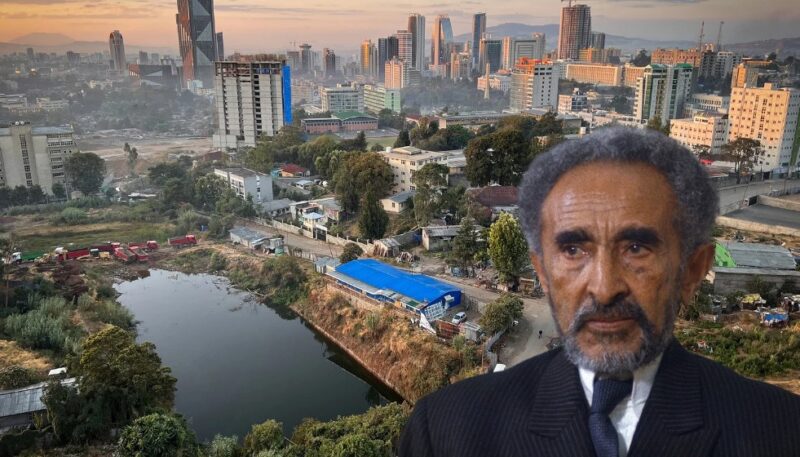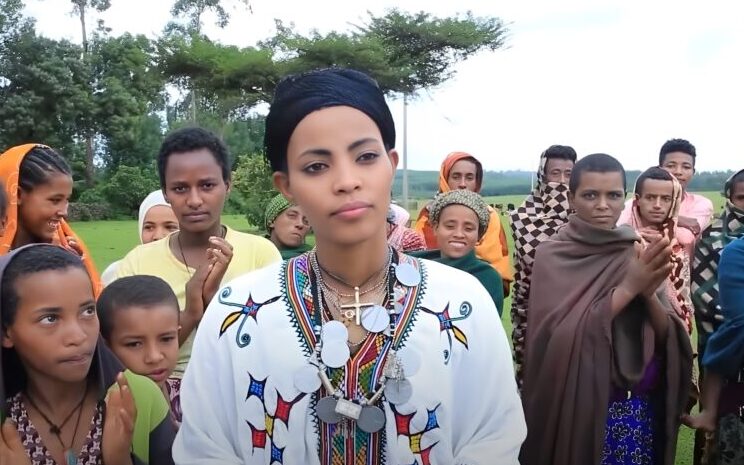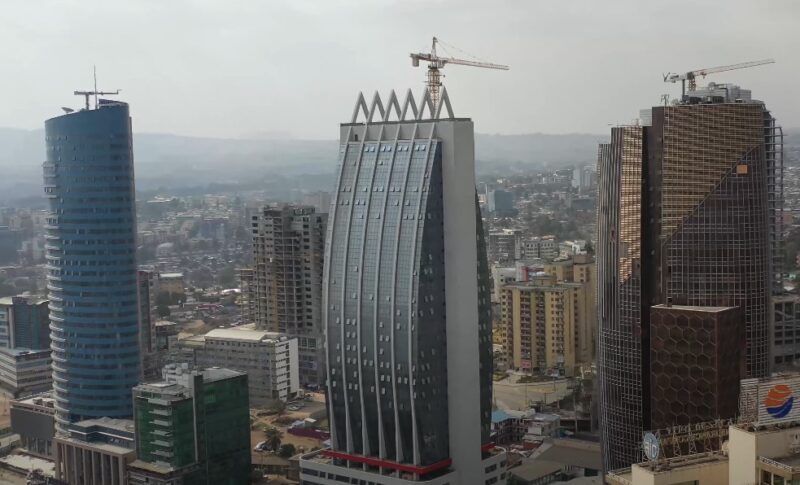When you walk through the vibrant streets of Addis Ababa today, it’s easy to feel the layers of history in the city’s lively atmosphere.
As Ethiopia’s capital, it’s a place of different cultures, languages, and ethnicities, with one group— the Amhara— playing a significant role in shaping the city’s development over time.
From the earliest days of Addis Ababa’s foundation to the present, the Amhara population has undergone a dynamic evolution. Here’s how it went.
The Founding of Addis Ababa
Let’s rewind to the late 19th century, when Emperor Menelik II founded Addis Ababa. At this time, the Amhara people were central to the imperial court and administration. Their language, culture, and traditions were woven into the very fabric of the new capital.
Menelik II’s reign was marked by the expansion of Ethiopia’s territory, and as a result, Addis Ababa grew into a thriving city, populated by a mix of ethnic groups— but with a strong Amhara presence leading the way.
The Amhara were the ruling class and had a substantial influence on the political, cultural, and economic development of the city.
Positions in government, military, and key administrative roles were largely filled by Amharas, and their presence in the city was hard to miss.
The Shifting Political Landscape in the 20th Century

Fast forward to the mid-20th century, and things started to shift. The political upheaval during this time, particularly the overthrow of Emperor Haile Selassie in 1974, shook the country to its core.
Ethiopia, now under the control of the Derg, a Marxist-Leninist military junta, experienced radical land reforms and forced relocations that significantly impacted the demographic composition of Addis Ababa. Amharas, like other ethnic groups, faced various challenges under this new regime.
There was political repression, economic hardship, and a shifting balance of power. Even though the Amhara population in Addis remained significant due to their long-standing presence and key roles in the military and government, the city began to reflect a broader mix of ethnic groups.
Addis Ababa was evolving into a more diverse metropolis, with the Amhara gradually losing their historical dominance in the capital’s political scene.
The EPRDF Era (A New System and New Dynamics)

The next major turning point came in 1991 with the fall of the Derg and the rise of the Ethiopian People’s Revolutionary Democratic Front (EPRDF), led by the Tigrayan People’s Liberation Front (TPLF).
This period introduced Ethiopia to ethnic federalism, fundamentally altering how the country was governed. The ethnic federalist system divided Ethiopia into regions based on ethnic lines, and while Addis Ababa was geographically in the Oromo region, it functioned as a federal city-state.
This created new political dynamics around the city’s identity and ownership, sparking tensions, particularly between the Amhara and Oromo populations. During this time, many Amharas continued to migrate to Addis Ababa, drawn by the city’s economic and educational opportunities.
However, their political influence diminished under the EPRDF government, which was largely dominated by the Tigrayan elite.
Despite this shift, the Amhara remained a substantial portion of the city’s population, but their dominance was no longer as pronounced as it had been in previous decades.
The 2007 Census (Amharas Remain a Key Demographic)
The 2007 Ethiopian national census gave us some concrete data about the Amhara population in Addis Ababa. Amharas made up around 47% of the city’s population, which at the time was over 2.7 million.
Addis Ababa has always been a city of opportunity, particularly for those seeking education and employment in government or the private sector.
Many Amharas continued to migrate to the capital from the northern highlands, contributing to the growth and vibrancy of the city.
Even though their political prominence had waned, the Amhara maintained a strong presence in key sectors like education, business, and administration.
Post-2018

After 2018, Ethiopia saw yet another wave of political change. Prime Minister Abiy Ahmed’s rise to power, followed by the dissolution of the EPRDF, sparked a new era of reforms— and with it, new challenges for the Amhara population in Addis Ababa.
A significant issue that has arisen during this time is the debate over the ownership and identity of Addis Ababa. The city sits within the Oromo regional state, and many Oromo political groups have pushed to assert their historical and cultural ties to the capital, often referring to it by its Oromo name, Finfinne.
This has stirred tensions with the Amhara community, who feel a strong connection to Addis Ababa due to their long-standing history in the city.
There have been instances of ethnic-based violence and reports of rising insecurity for some Amhara residents. These events have left many in the community feeling marginalized, unsure of what the future holds for them in Ethiopia’s political and social landscape.
What Does the Future Hold for the Amhara in Addis Ababa?

Looking forward, it’s hard to predict exactly how the Amhara population in Addis Ababa will change. Ethiopia is in a period of transition, and the demographic shifts in the capital are closely linked to the political environment.
One thing is clear, though: Addis Ababa will continue to attract people from across the country. The city remains a hub for economic opportunities, education, and government work, making it a prime destination for many, including the Amhara.
However, the tensions between different ethnic groups, especially between the Amhara and the Oromo, are likely to influence how the city develops in the coming years. Some potential factors that could shape the future include:
Political Reforms
Any changes to Ethiopia’s ethnic federalist system or shifts in political power could directly impact the Amhara population in Addis Ababa.
The question of who “owns” the city will continue to be a contentious issue, particularly as political groups seek to assert their influence.
Migration Patterns
Addis Ababa will likely continue to grow, but who comes to the city may depend on political and economic stability.
If there is ongoing conflict in other regions, including the Amhara and Oromo areas, migration to the city could increase or decrease, depending on how safe and welcoming the city is perceived to be.
Economic Opportunities

The availability of jobs, housing, and education in Addis Ababa will continue to attract people from all over Ethiopia.
As long as Addis remains a central hub for economic activity, the Amhara population, along with many other groups, will likely persist.
A Community in Flux
The Amhara population in Addis Ababa has experienced many ups and downs over the years. From being the ruling class in the city’s early days to facing political and social challenges in more recent times, their story is one of resilience and adaptation.
While their political influence may not be what it once was, the Amhara community continues to play a vital role in the life of Ethiopia’s capital. As Ethiopia moves forward, the Amhara, like other ethnic groups, will have to navigate the complexities of a country in transition.
It’s a future that feels uncertain, but if history has taught us anything, it’s that the Amhara people will find ways to persist, adapt, and thrive in Addis Ababa’s ever-evolving landscape.

